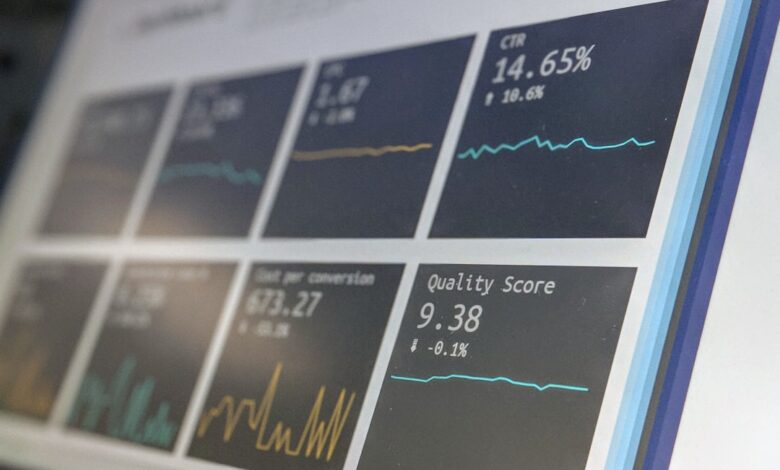Day Trading Demystified: A Beginner’s Guide to Strategies, Analysis, and Risk Management

In the fast-paced world of day trading, success hinges on a combination of strategic insight, analytical skills, and psychological resilience. For beginners looking to navigate this dynamic landscape, understanding the fundamentals of day trading is essential. This article serves as a comprehensive guide, introducing key strategies that will empower novice traders to embark on their journey with confidence. We will delve into the importance of technical analysis in predicting market movements, explore risk management techniques to minimize potential losses, and examine the psychological aspects that influence decision-making in the heat of trading. Additionally, we’ll touch upon the rise of algorithmic trading and its transformative impact on the industry, as well as swing trading strategies designed to capitalize on short-term market trends. Finally, we will discuss the significance of news and events on intraday trading and highlight the tools and platforms that can streamline the trading process. Whether you are just starting out or looking to refine your approach, this article will equip you with the knowledge and strategies needed to thrive in the fast-evolving world of day trading.
- 1. **Getting Started: Essential Day Trading Strategies for Beginners**
- 2. **Mastering Market Movements: The Role of Technical Analysis in Day Trading**
- 3. **Navigating the Trading Landscape: Risk Management and Emotional Intelligence**
1. **Getting Started: Essential Day Trading Strategies for Beginners**
Getting started in day trading can be both exciting and daunting for beginners. To navigate this fast-paced environment, it's crucial to adopt essential strategies that can help lay a solid foundation for successful trading. Here are several key approaches to consider:
1. **Develop a Trading Plan**: A well-defined trading plan is essential for day traders. This plan should outline your trading goals, risk tolerance, and the specific strategies you intend to use. It should also include criteria for entering and exiting trades, as well as guidelines for managing risk.
2. **Focus on Liquid Markets**: Beginners should concentrate on trading in liquid markets, such as major stock indices or heavily traded stocks. High liquidity ensures that you can enter and exit trades easily without significant price fluctuations, which is vital for day trading.
3. **Utilize Technical Analysis**: Technical analysis plays a crucial role in day trading. Beginners should familiarize themselves with chart patterns, indicators, and other analytical tools that can help predict short-term price movements. Learning to read candlestick charts and recognizing trends can enhance decision-making.
4. **Start Small**: It's wise for newcomers to start with a small amount of capital. This approach allows for gradual learning without risking significant financial loss. As you gain experience and confidence, you can increase your trading size.
5. **Practice with a Demo Account**: Many trading platforms offer demo accounts that allow beginners to practice trading without real money. This is an excellent way to test strategies, learn how to use trading tools, and understand market dynamics in a risk-free environment.
6. **Set Realistic Goals**: Setting achievable profit targets is essential for maintaining motivation and managing expectations. Rather than aiming for large gains, focus on making consistent, smaller profits. This approach can help build a sustainable trading practice over time.
7. **Stay Informed**: Keeping abreast of market news and trends is critical for day traders. Economic reports, earnings announcements, and geopolitical events can greatly impact market movements. Being informed allows you to make timely decisions in response to market conditions.
By implementing these essential strategies, beginners can establish a solid grounding in day trading, increasing their chances of success while minimizing potential pitfalls.
2. **Mastering Market Movements: The Role of Technical Analysis in Day Trading**
Technical analysis is a cornerstone of day trading, providing traders with the tools to evaluate and predict market movements based on historical price data and trading volume. By analyzing charts and using various indicators, day traders can identify patterns and trends that may suggest future price behavior.
One of the fundamental concepts in technical analysis is the idea of support and resistance levels. Support refers to a price level where a stock tends to stop falling and may bounce back up, while resistance is where a stock struggles to rise past. Recognizing these levels can help traders make informed decisions about entry and exit points.
Another essential aspect is the use of technical indicators, such as moving averages, Relative Strength Index (RSI), and Bollinger Bands. Moving averages smooth out price data to create a trend-following indicator, which can help traders determine the overall direction of a stock. The RSI, on the other hand, measures the speed and change of price movements to identify overbought or oversold conditions, offering insights into possible reversals.
Chart patterns, such as head and shoulders, flags, and triangles, also play a significant role in predicting future price movements. These formations can signal potential breakouts or reversals, allowing traders to position themselves advantageously before the market moves.
Moreover, technical analysis is not solely about charts and indicators; it also involves understanding market psychology. Price movements often reflect the collective behavior of traders and investors, making it vital to consider market sentiment when making trading decisions.
In summary, mastering technical analysis equips day traders with the knowledge and skills necessary to interpret market movements effectively. By leveraging historical data, recognizing patterns, and applying various indicators, traders can enhance their ability to make informed trading decisions and increase their chances of success in the fast-paced world of day trading.
3. **Navigating the Trading Landscape: Risk Management and Emotional Intelligence**
Risk management and emotional intelligence are two critical components that can significantly influence a trader's success, particularly for beginners stepping into the volatile world of day trading.
Effective risk management involves implementing strategies to protect capital and minimize losses. One common approach is the use of stop-loss orders, which automatically close a position at a predetermined price to limit potential losses. Additionally, traders should consider position sizing, which dictates how much capital to allocate to a single trade. By only risking a small percentage of their total trading capital on each trade, beginners can safeguard against substantial losses that could deplete their accounts.
Moreover, understanding the risk-reward ratio is essential. Traders should evaluate the potential profit of a trade against the possible loss, ensuring that the potential reward justifies the risk taken. A common rule of thumb is to aim for a risk-reward ratio of at least 1:2, meaning that for every dollar risked, there should be the potential to earn two.
In parallel with risk management, emotional intelligence plays a crucial role in trading decisions. The fast-paced nature of day trading can provoke strong emotional responses, such as fear and greed, which can cloud judgment and lead to impulsive decisions. Developing emotional intelligence involves recognizing these emotions and understanding how they affect trading behavior. For instance, fear of missing out (FOMO) might compel a trader to enter a position without adequate analysis, while panic selling during a downturn can lead to unnecessary losses.
To cultivate emotional intelligence, traders can practice mindfulness techniques, such as keeping a trading journal to reflect on their decisions and emotional states during trades. This self-awareness can help them identify patterns in their behavior and develop a more disciplined approach to trading.
In summary, navigating the trading landscape requires a balanced approach to both risk management and emotional intelligence. By implementing sound risk management techniques and fostering emotional awareness, beginner traders can increase their chances of success and build a sustainable trading practice.
In conclusion, embarking on the journey of day trading as a beginner can be both exciting and challenging. By equipping yourself with essential strategies, understanding the significance of technical analysis, and implementing robust risk management techniques, you can enhance your chances of success in the fast-paced trading environment. Recognizing the psychological aspects of trading is equally crucial, as managing emotions can significantly influence your decision-making process.
Moreover, the rise of algorithmic trading introduces new opportunities and efficiencies, allowing traders to leverage technology for better outcomes. Additionally, being aware of how news and events can impact market movements will help you stay informed and responsive. Finally, choosing the right tools and platforms is fundamental to streamline your trading experience and optimize your strategies.
As you delve deeper into the world of day trading, remember that continuous learning, practice, and patience are key to mastering the art of trading. With the right approach and mindset, you can navigate the complexities of the market and work towards achieving your financial goals.





